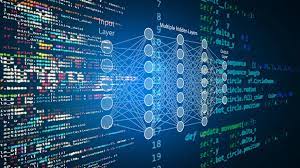The Science of Patterns – Data Analysis and Predictive Modeling
A predictive model is a probabilistic model that predicts future outcomes based on historical data. It can be used to identify upcoming risks or opportunities for an organisation. For example, a Bayesian spam filter uses predictive modeling to estimate the probability that a certain email is spam.
However, predictive modeling is not without its challenges. These include data preparation and ensuring that the models are vetted. Check details about Data Science Classes in Pune.
Predictive modeling
Predictive modeling is a statistical approach to determine future events or outcomes. It combines data mining and machine learning to analyze current and historical data and then predicts what will happen in the future. It is also referred to as predictive analytics, and it’s one of the premier ways a business can look into the future and make plans accordingly.
Whether used to identify fraudulent activity or predict customer behavior, predictive models can be powerful tools for businesses. They can help improve customer retention and increase revenue, while reducing operational costs. They can also help businesses find and market new products to customers.
Modern ecology recognizes that modelling systems across scales and at multiple levels is essential. A general strategy for tying patterns to models of these complex systems is called pattern-oriented modelling (POM). This approach has been successful in identifying useful low-level processes like adaptive behaviour. Its limitations include technical and cultural barriers to accessing useful data.
Data analysis
Data analysis is a process of inspecting, cleaning, transforming, and modeling raw data to identify patterns, trends, and insights. It helps businesses develop responsive, practical business strategies. It also reduces the risks associated with decision-making. It consists of various analytical methods such as descriptive analysis, factor analysis, and hypothesis testing.
Unlike predictive modeling, which focuses on anticipating future trends and events, data analysis seeks to understand why or how something happened. It uses a range of analytical techniques, including regression models and time series analysis. It also employs decision trees to map out possible courses of action and outcomes.
One of the most popular data analytics techniques is pattern matching. This technique utilizes regular expressions to describe the pattern to be found and a computer’s faster processing power to find it. Other popular techniques include measures of central tendency, such as mean, median, and mode. And, factor analysis, which reduces complexity by grouping correlated variables into independent latent variables.
Machine learning
A well-known metaphor for mathematics is that it is a science of patterns. It is a popular theme in the NCTM’s Principles and Standards (NCTM, 2000) and in books such as Mathematics as a Science of Patterns (Resnik, 1999). Students also use the crosscutting concept of patterns to analyze pictorial data, compare similar features between species, or identify proportional relationships. They can do these tasks in a variety of ways, such as using graphs or through card sorts.
Machine learning is a set of algorithms that help businesses find hidden trends in data and make better decisions. It is used in a variety of industries, from combating cyber crime to optimizing inventory and supply chain management. It also enables companies to make faster prototypes of new products and services. The technology is quickly changing all industries, and leaders need to understand the basics of machine learning. A good place to start is the free short course on machine learning from datascience@berkeley.
Big data
Big data is a large volume of structured and unstructured information that requires new analytics tools and techniques. It can be difficult to manage, and it is not a replacement for traditional business intelligence. However, it can improve decision-making and help reduce risk.
It’s essential to understand the complexities of big data before making a business decision. You should also plan for technical and cultural barriers that may prevent you from gaining value from your data.
Data modeling and predictive analytics are critical tools for analyzing big data. They enable analysts to recognize patterns and predict behavior. They can help organizations reduce operational outages, optimize production and increase customer satisfaction. In addition, they can provide a more personalized approach to marketing. Moreover, they can help businesses make smarter decisions about financial and planning considerations. They can also help companies innovate by studying interdependencies between people, institutions, and processes. These insights can lead to new products and services, as well as better ways of delivering them.
